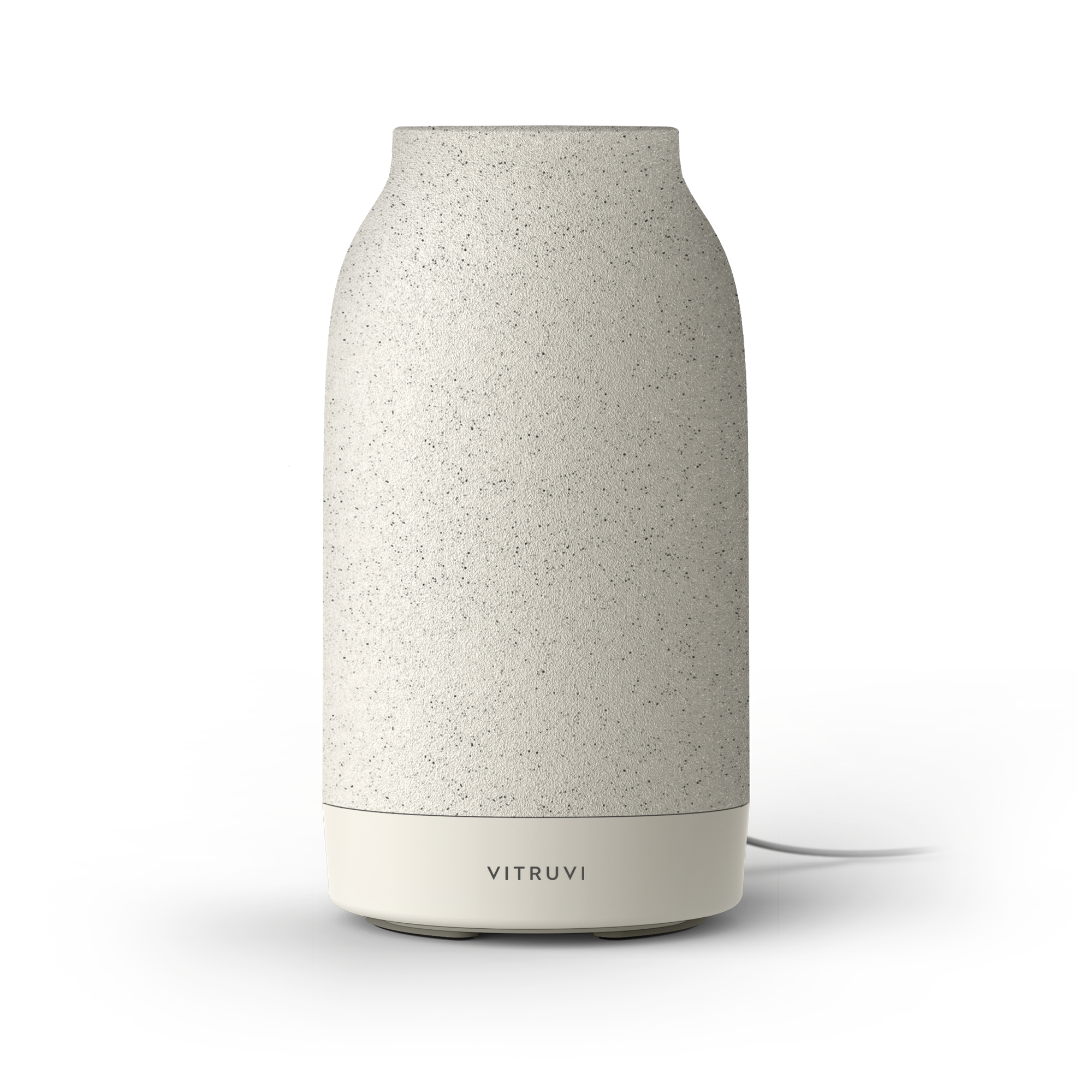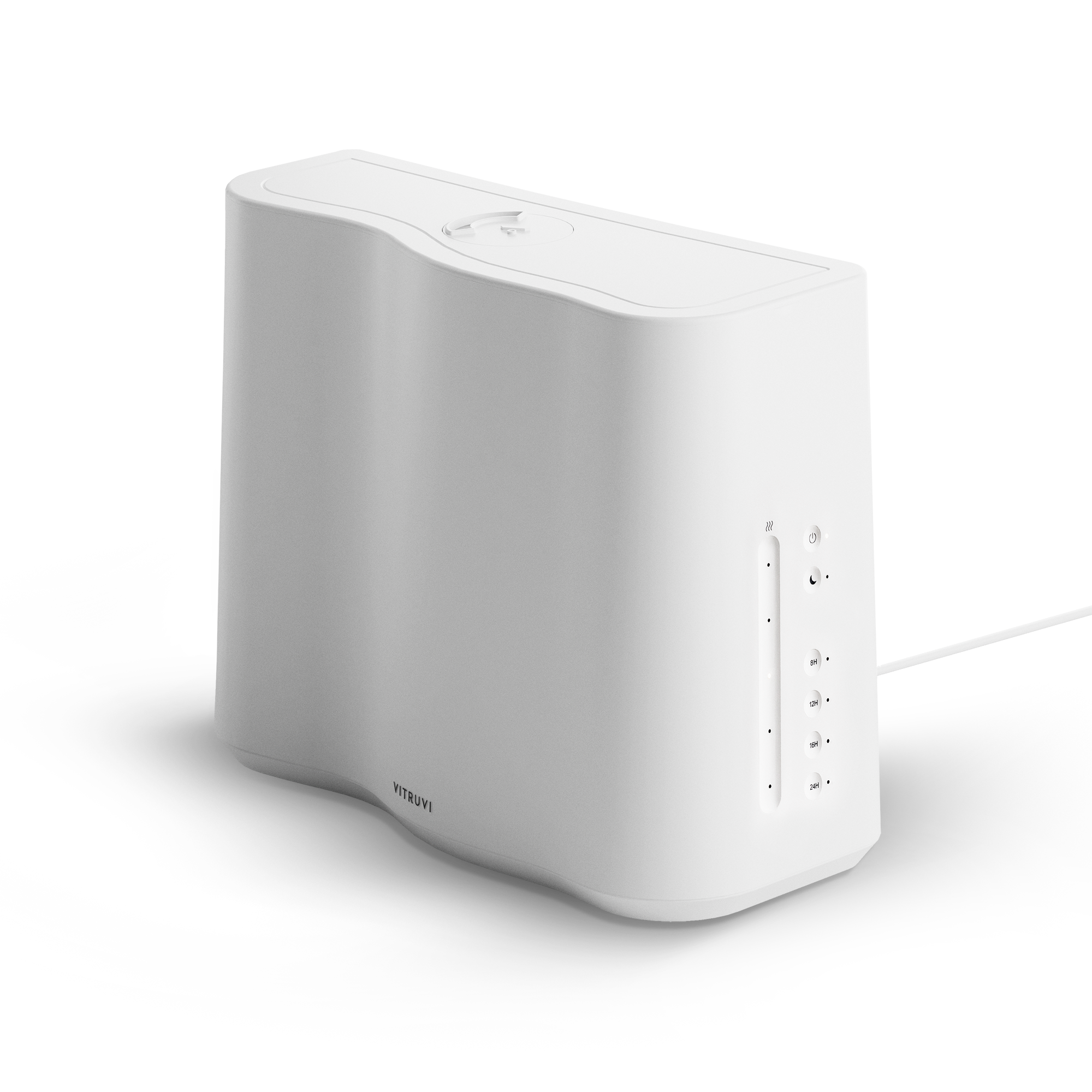A wooden sign emblazoned with the farm’s name is the only indication that you’ve made it to Bilston Creek. Turning off the main road leads explorers along a quiet path until the green lawn of a former apple orchard, and beyond it a majestic barn, comes into view. Instantly, the pace slows—this is a place of tranquility.
Located in the sleepy town of Metchosin (which happens to be where vitruvi cofounders Sara Panton and Sean Panton grew up) on Vancouver Island, Bilston Creek is a lavender farm and event venue; the vitruvi team was lucky enough to spend a few days glamping in the luxe tents that dot the property, sipping on natural wine and feasting on meals made by the farm’s in-house chef. The approximately 3,000 crops of lavender that were planted here are hand-harvested and either dried and sold as such, or distilled right on the property using a state-of-the-art copper still and turned into precious essential oil.
“The foremost copper distillation manufacturer is in Portugal and they’ve been doing it for 175 years,” says Bilston Creek cofounder Ben Drury, standing next to the bronze-hued structure that looks something like a giant genie lamp. “They’re all hand-pounded. It’s 100 per cent copper, so everything that touches the oil, touches the plant—there’s no lead, it’s all 100 per cent copper.” That means a cleaner, safer, and purer end result. “This is a lavender referred to as lavandula intermedia or hybrida, so it’s a hybrid of spike and English lavender. It’s referred to as grosso blue, and it was founded in France,” explains Drury (note: vitruvi sources its own organic Lavender Essential Oil right from France). “They are huge, bulky, high-yielding, very resilient, good for this area, good with drought, good with rain, good with snow.” As in: good for the battery of unpredictable Vancouver Island weather patterns.
Once the lavender stocks have been cut, they are weighed and then put whole into the still (while it’s not as much as from the flower, some oil does come from the stems). The bottom section of the still, a 250-litre cylinder, is filled with about 50 litres of water that is brought to a boil thanks to a propane element underneath. The middle section, where the lavender goes, is separated by a grate that allows the steam from the boiling water to rise up through the plants. Then the onion, as it’s called (the top of the genie lamp), is put on top to seal it all in.
“What’s going to happen is that as steam develops and gets stronger and stronger, it will pass up through the lavender that we just harvested, up into the onion section, into a pipe, and then down the pipe still as steam—and super-duper hot, it’ll come into the condenser,” says Drury. “And this condenser is just filled with air-temperature, standard tap water. There’s a copper coil, and it will condense the steam that’s been produced as it passes through the lavender; it’ll condense it back into a liquid, and it’ll come out the bottom as a mix of three things: one, there will be a slight amount of contaminants; there’s going to be about nine-tenths hydrosol; and one-tenth, this is broad strokes, we’ll get about 600 millilitres of oil. It really depends on how dry the plant is, and it depends what time of the year it is. It takes about 45 minutes for it to boil, and we run the still consistently for two hours.” Is that a lot of work for a mere two fluid-ounces (give or take) of essential oil? Simply put, yes. But some of the best things in life take time, dedication, and precision. And knowing the process behind a product makes using it all the more beautiful.











